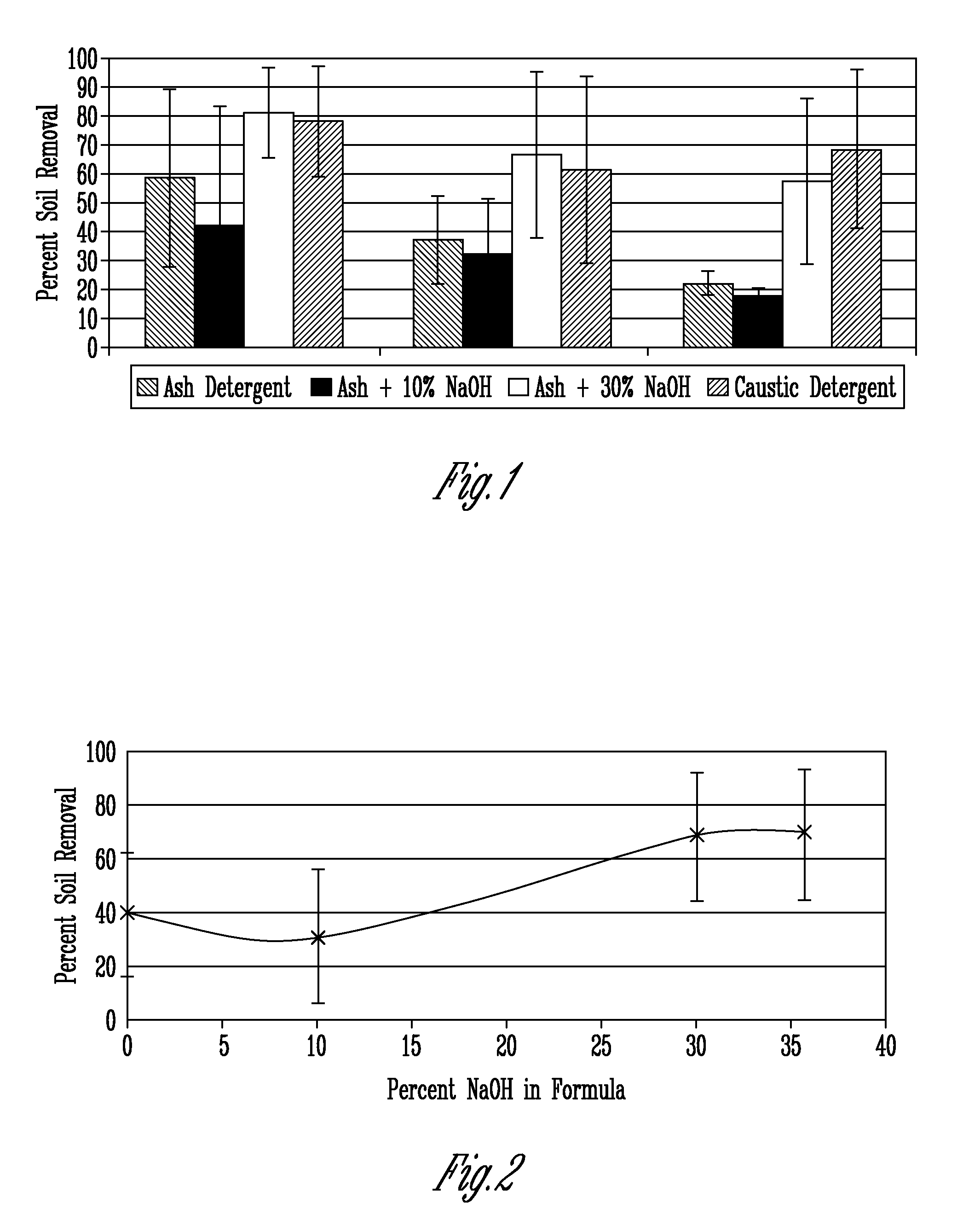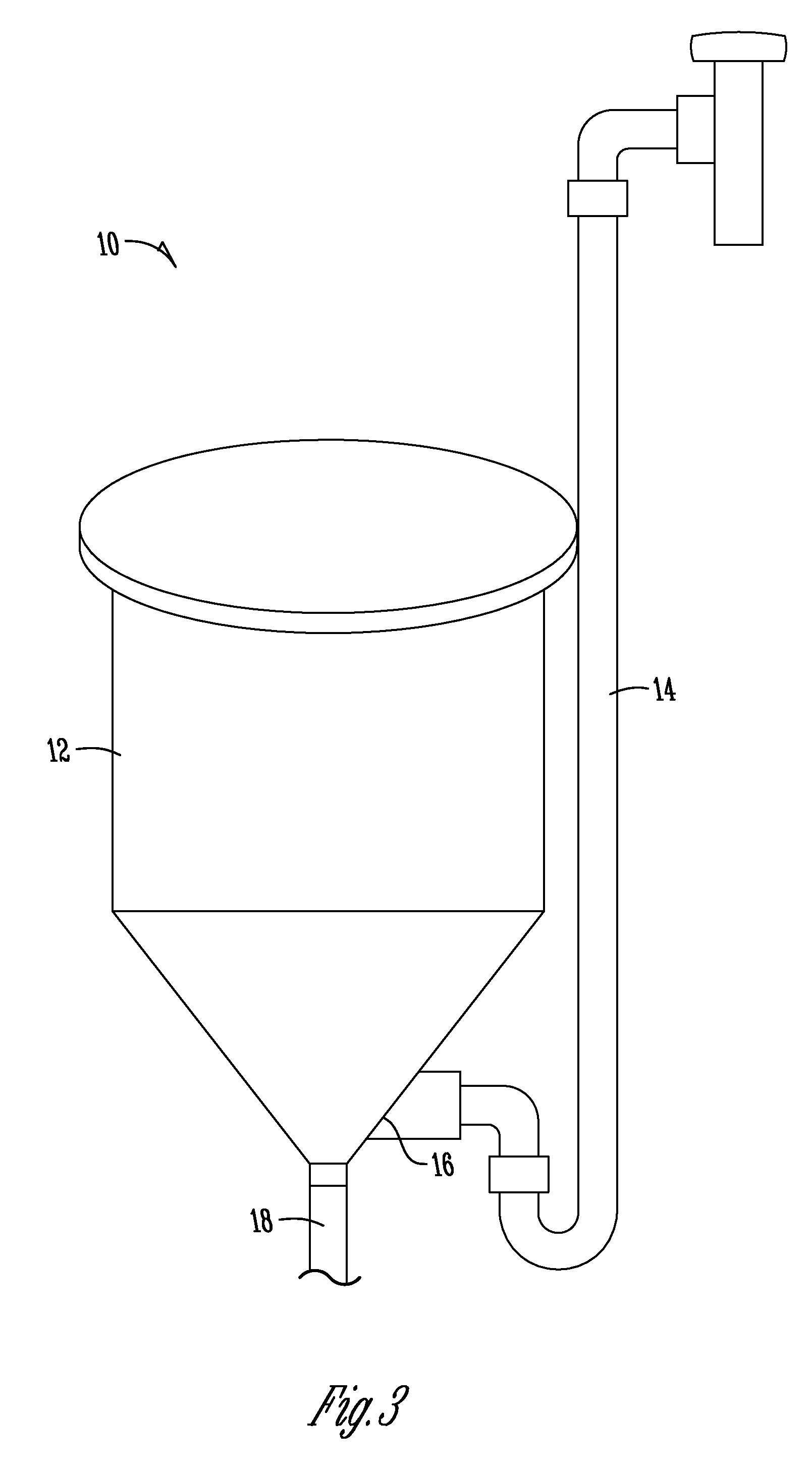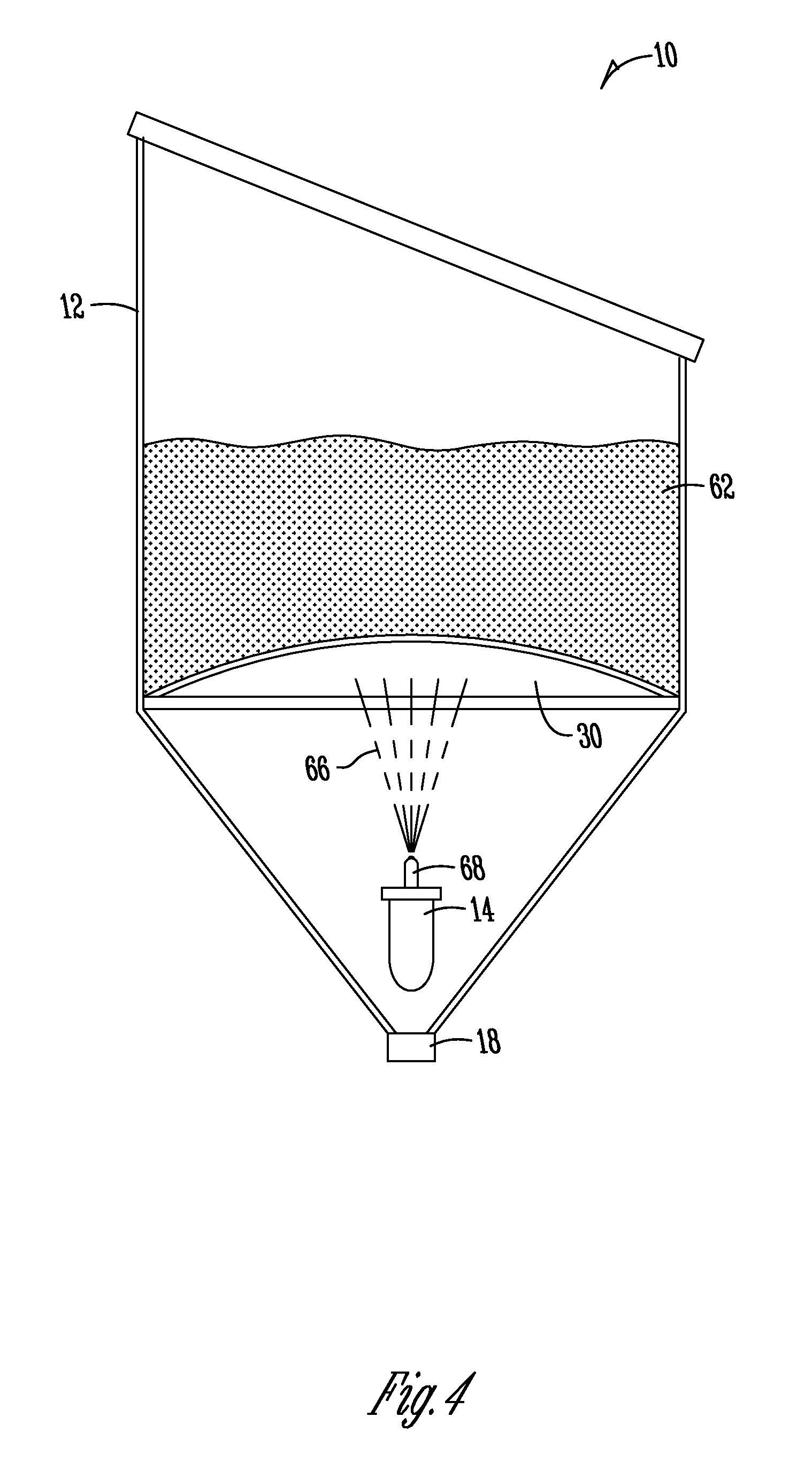On site generation of alkalinity boost for ware washing applications
a technology for ware washing and alkalinity boost, which is applied in the direction of detergent compounding agents, inorganic non-surface active detergent compositions, separation processes, etc., can solve the problems of increased risk to workers and burns to exposed skin, and achieves efficient and sustainable development, enhancing the alkalinity and cleaning power of a detergent, and improving the effect of ash-based detergents
- Summary
- Abstract
- Description
- Claims
- Application Information
AI Technical Summary
Benefits of technology
Problems solved by technology
Method used
Image
Examples
example 1
[0082]A comparison of the cleaning performance of ash-based detergents and caustic detergents was conducted. Initial studies demonstrated that solid caustic detergents were able to remove more soil than a solid ash-based detergent. However, the addition of NaOH improved the soil removal efficacy of the ash-based detergent. The ability of a solid caustic detergent was compared to a solid ash-based detergent, with and without the addition of 10 and 30% NaOH to the ash-based detergent.
[0083]Soil removal was conducted in an AM-14 automatic dish machine with metal panels soiled with egg yolk. Approximately 0.5 yolks was deposited onto a clean and dry panel and spread into a uniform layer with a rolling bar. The soil set for 2 hours, exposed to near boiling water for 60 seconds in steam jacketed container, exposed to oven at approximately 200° F. for 2 hours and then allowed to cool. The soil was then washed in a machine with 1000 ppm detergent and 0 gpg high temperature water with a stan...
example 2
[0087]Testing of ware wash applications to achieve an increase in OH− alkalinity in an ash-based detergent. The use of electrochemical water technology to increase OH− alkalinity in a use solution was analyzed. In addition, a primary goal of the analysis was to confirm the ability to increase OH− alkalinity without the requirement of adding any additional chemical products and / or generating any additional waste streams.
[0088]A ware wash application tested a 5% ash-based detergent that was recirculated through both sides of a two chamber cell. An electrolyte having a pH from about 12.8-13.0 was obtained in the cathode chamber and a pH from about 9.3-9.8 was obtained in the anode chamber. Initial analysis demonstrated a ratio of percent alkalinity resulting from ash to caustic improve from approximately 100:0 to approximately 90:10. The subsequent “recycling” of the anode stream into the cathode chamber for subsequent electrolysis for further increase in the hydroxide alkalinity resul...
example 3
[0089]A comparison of the cleaning performance of ash-based detergents and caustic detergents was conducted, demonstrating that an increase in the concentration of alkalinity from sodium hydroxide to ash improves detergency. Hydroxide alkalinity was generated in a carbonate detergent use solution as a result of recycling the “spent” anode solution into the cathode. Table 1 shows the pH measured over time in the electrochemical cells used to increase the sodium hydroxide concentration.
[0090]
TABLE 1BatchRun Time (hours)Cathode pHAnode pH13.512.99.322.512.99.832.2513.36.1**depleted Apex used as Cathode feed / fresh Apex to Anode
[0091]In batch 1 and 2 a 5% Apex solution was input to both the anode and cathode and recirculated until a pH of around 13 was achieved in the cathode solution. In batch 3 the anode solution from batch 1 and 2 were combined and recirculated in the cathode. Fresh 5% Apex solution was added to the anode. Sodium ion balance calculations were completed and confirmed t...
PUM
| Property | Measurement | Unit |
|---|---|---|
| wt % | aaaaa | aaaaa |
| mass | aaaaa | aaaaa |
| mass | aaaaa | aaaaa |
Abstract
Description
Claims
Application Information
 Login to View More
Login to View More - R&D
- Intellectual Property
- Life Sciences
- Materials
- Tech Scout
- Unparalleled Data Quality
- Higher Quality Content
- 60% Fewer Hallucinations
Browse by: Latest US Patents, China's latest patents, Technical Efficacy Thesaurus, Application Domain, Technology Topic, Popular Technical Reports.
© 2025 PatSnap. All rights reserved.Legal|Privacy policy|Modern Slavery Act Transparency Statement|Sitemap|About US| Contact US: help@patsnap.com



